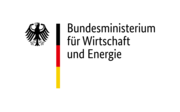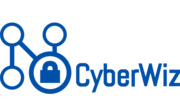
KonMaFS - Konsistente Entwicklung von Materialflusssystemen durch eine modellbasierte Vorgehensweise
In the project „Consistent Development of Automated Material Flow Systems using a model-based approach“ an approach is being researched how relations and restrictions between models for automated material flow systems may be developed using a „Virtual Single Underlying Metamodel“ (V-SUMM). With this approach inconsistencies between the models are automatically identified. We develop a prototype to visualize these inconsistencies. Also a semi-automated management tool for solving these inconsistencies will be developed.

Harness.NRW - Harmonisierung und Erweiterung der Potenziale existierender E-Assessment-Lösungen
Harness.NRW cares about existing e-assessment solutions, which are currently already in productive use at individual partner locations or have the status of a prototype. These will be modularized and made interoperable by means of suitable software technology measures to the extent that they are available for use throughout NRW.

DiAnEE - Digitaler Analyst für die nachhaltige Energienutzung und Energiekostensenkung bei Industrie- und Gewerbekunden
Progressive digitization not only opens up new possibilities for the control and coordination of energy production, network operation and consumption, but can also be used to increase transparency for energy users and energy experts and to reduce implementation barriers for measures of sustainable energy use and energy cost reduction. However, this requires cooperation in transdisciplinary networks in order to combine energy management, information technology and user-specific aspects in the best possible way. In the project "Digital Analyst for Sustainable Energy Use and Energy Cost Reduction for Industrial and Commercial Customers" (DiAnEE), an innovative approach is therefore being pursued, researched and prototypically implemented that both increases transparency for experts and energy users and lowers entry barriers for sustainable energy use in industry and commerce: a Digital Analyst (DigA), i.e. a web-based "own consumption and flexibility calculator" for commercial and industrial companies.
KEA-Mod - Kompetenzorientiertes E-Assessment für die grafische Modellierung
In the KEA-Mod project, a platform for a competence-oriented e-assessment for lectures dealing with graphic modelling in computer science and related disciplines is to be created. These typically have a high number of participants and a high level of personnel support. The intended platform should automate the assessment and thus reduce the effort and improve the possibilities for self-determined learning (formative assessment).
AKoFOOP - Automatisierte Kompetenzmessung und Feedbackerzeugung zum Objektorientierten Programmieren
Systems for the automated evaluation of solutions to programming tasks can relieve teachers of time-consuming correction work in order to increase the capacity of classroom teaching and improve supplementary online offerings. So far, automatic code evaluation has been moving strongly in the direction of a mere correctness check of solutions and ignoring the general trend towards the development of competencies instead of mere declarative knowledge. In the AKoFOOP project, therefore, three research areas of computer science and its didactics are to be linked in order to fill the research gaps described above.

BIF II - Bildungsgerechtigkeit im Fokus
Mit dem Qualitätspakt-Lehre-Projekt „Bildungsgerechtigkeit im Fokus“ entwickelt und befördert die UDE Potenziale junger Menschen, deren Studium sie und ihr Umfeld vor große Herausforderungen stellt. Das Vorhaben bündelt an der UDE einen Großteil der Aktivitäten zur gezielten Weiterentwicklung der Studieneingangsphase.

The project has delivered and validated a tool that helps to 1) better understand current cyber security levels across complex enterprise-wide architectures, including relationships and interdependencies between systems 2) prioritize areas to address and cyber security investments to pursue 3) proactively manage cyber security e.g. when building or modifying architectures.

ADVERT - Concepts, Methods and Tools for Architecture- and Quality-centric Evolution of Long-living Software Systems
For increasing the maintainability of software, the development artifacts need to be consistent with each other and up-to-date. To meet increasing external quality requirements and to account for changes in the environment, the system has to be changed regularly. The goal of this project is to develop concepts, methods, and tools for keeping the consistency between the development artifacts, and for systematically identifying and performing the necessary changes on a system to meet the quality requirements in a changing environment.

GenEDA - Generation and Evaluation of Design Alternatives for Software Architectures
The GenEDA project (Generation and Evaluation of Design Alternatives for Software Architectures) will investigate how quality goals (especially performance/scalability, security, and partial usability) can be used in software development to generate different design alternatives for software systems to be developed in a structured and systematic way. Specifically, methods are to be developed that allow different design alternatives not only to be generated but also to be evaluated on the basis of quality objectives.